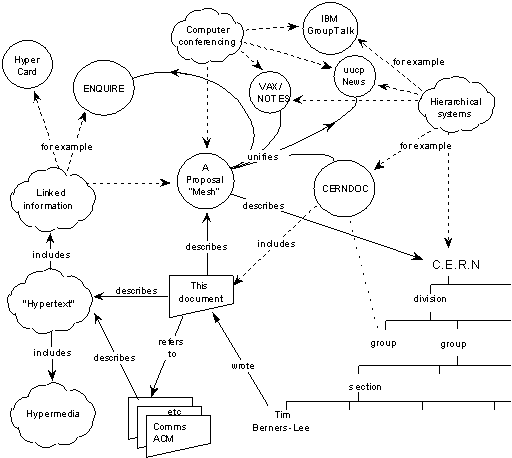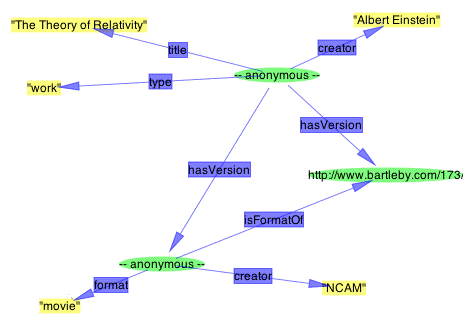W3C and the Semantic Web
Charles McCathieNevile - charles@w3.org
- Who is W3C?
- What do they do?
- What is the Semantic Web?
- What is RDF?
- Why is it interesting?
Who is W3C
- An international consortium
"leading the Web to its full potential"
- ~400 members
Companies, universities, governments, associations...
- 67 Staff led by Tim Berners-Lee (creator of the Web)
- Working groups developing technical specifications
What does W3C do?
"Standards" for the Web, in 4 areas
- Achitecture
- Interaction
- Technology and Society
- Web Accessibility Initiative
Architecture and Interaction
Basic standards for the Web, such as
- (X)HTML, HTTP, URI
- MathML, SVG, SMIL, Xforms, ...
- Internationalisation (i18n), Device Independence
- Web Services protocols
- XML, Xlink, XML Schema, XSLT, ...
Web Accessibility Initiative
Access for all, regardless of disability
- How to make Web pages that work for everyone
- Development of tools and techniques
- Promotion of accessibility
- Review of W3C work to ensure accessibility
Technology and Society
- Security and encryption
- Content selection
- Privacy (P3P)
- Semantic Web (RDF)
Semantic Web?
What is RDF?
Resource Description Framework
- A language for the Semantic Web...
- Written in XML
- Collecting, merging, querying diverse information
- Designed as part of the architecture of the Web
How does it work?
Anyone can say anything about anything...
Can combine like this:
What can it do?
To do things like:
To reach the vision:
Information
Management: A Proposal,
--Tim Berners-Lee, CERN, March 1989

Why is it interesting?
A bibliographic example?
There is a work which has
As a picture?

"James' dream"...
Making it work in the field.
Using the information...
- Publish direct to secured Web
- Or correct details afterwards (audit trail!!)
- Allowing ongoing monitoring over data collection
- Discovering multiple identity
- Finding patterns
- Checking consequential events
Why do I believe it?
I tried it! To manage an Italian legal case
- Documents and translations
- Witnesses, experts, actors
- Events, dates, locations
- Simple extensible tools
And I am innocent...
Thank you
Questions?
This Presentation (will be)
http://www.w3.org/2001/sw/Europe/talks/040603-ecchrd/all
--chaals: charles@w3.org
the rest
- http://www.w3.org/2001/sw/Europe




